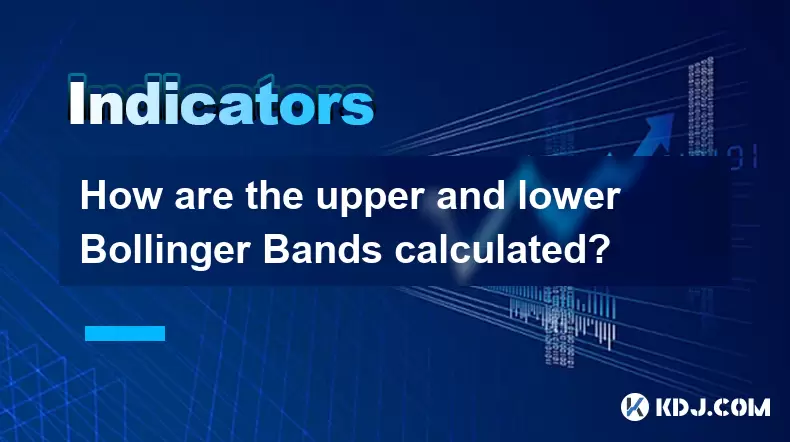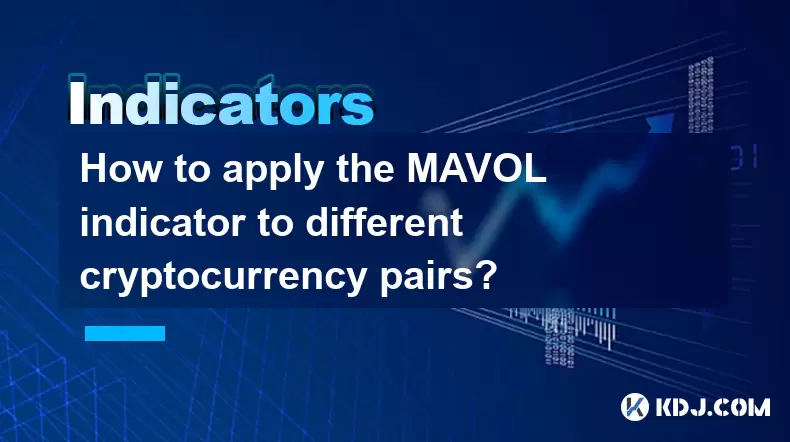-
 Bitcoin
Bitcoin $118400
0.47% -
 Ethereum
Ethereum $3836
2.20% -
 XRP
XRP $3.157
2.98% -
 Tether USDt
Tether USDt $0.9999
-0.03% -
 BNB
BNB $801.5
1.31% -
 Solana
Solana $180.9
2.07% -
 USDC
USDC $0.9999
-0.02% -
 Dogecoin
Dogecoin $0.2225
2.50% -
 TRON
TRON $0.3285
-1.02% -
 Cardano
Cardano $0.7789
2.60% -
 Hyperliquid
Hyperliquid $43.60
2.39% -
 Sui
Sui $3.892
4.41% -
 Stellar
Stellar $0.4229
3.34% -
 Chainlink
Chainlink $18.01
3.98% -
 Hedera
Hedera $0.2745
6.77% -
 Bitcoin Cash
Bitcoin Cash $582.3
3.38% -
 Avalanche
Avalanche $23.77
1.04% -
 Ethena USDe
Ethena USDe $1.001
0.01% -
 Toncoin
Toncoin $3.493
3.59% -
 Litecoin
Litecoin $110.0
2.48% -
 UNUS SED LEO
UNUS SED LEO $8.936
-0.37% -
 Shiba Inu
Shiba Inu $0.00001304
2.49% -
 Uniswap
Uniswap $9.999
1.09% -
 Polkadot
Polkadot $3.897
3.26% -
 Monero
Monero $308.6
-0.83% -
 Dai
Dai $0.9999
-0.01% -
 Bitget Token
Bitget Token $4.504
-0.04% -
 Pepe
Pepe $0.00001154
2.95% -
 Cronos
Cronos $0.1471
3.06% -
 Ethena
Ethena $0.6691
19.53%
How are the upper and lower Bollinger Bands calculated?
Bollinger Bands use a 20-period SMA and standard deviation to create dynamic support/resistance levels, helping traders identify volatility, breakouts, and potential reversals in crypto markets.
Jul 31, 2025 at 08:22 am

Understanding Bollinger Bands and Their Components
Bollinger Bands are a widely used technical analysis tool in the cryptocurrency trading space, designed to measure market volatility and identify potential price breakouts or reversals. The indicator consists of three lines plotted on a price chart: the middle band, the upper band, and the lower band. The middle band is typically a simple moving average (SMA) of the price over a defined period, most commonly 20 periods. The upper and lower bands are derived from this middle line by adding and subtracting a multiple of the standard deviation of price movements during the same period. The standard deviation is a statistical measure that quantifies the amount of variation or dispersion in a set of values. In this context, it reflects how much the price deviates from the average.
Calculating the Middle Band
The foundation of Bollinger Bands lies in the calculation of the middle band, which serves as the baseline for the upper and lower bands. To compute this, traders typically use a 20-period simple moving average (SMA). For example, if you are analyzing a daily chart, you would sum up the closing prices of the last 20 days and divide that total by 20. This gives you the average price over that window. The formula is:
- Middle Band = SMA(20) = (Sum of Closing Prices over 20 periods) / 20
This moving average smooths out price data to form a single flowing line that helps identify the overall trend direction. The choice of 20 periods is conventional but can be adjusted depending on the trader's strategy or time frame. The resulting SMA becomes the central reference point from which the upper and lower bands are calculated.
Determining the Standard Deviation
After establishing the middle band, the next critical step is computing the standard deviation of the price data over the same 20-period window. Standard deviation measures how spread out the prices are from the average. A higher standard deviation indicates greater volatility, while a lower value suggests more stable price action. To calculate the 20-period standard deviation:
- Calculate the mean (SMA) of the closing prices over 20 periods.
- Subtract the mean from each individual closing price to get the deviation for each period.
- Square each deviation to eliminate negative values.
- Sum all squared deviations.
- Divide the sum by the number of periods (20) to get the variance.
- Take the square root of the variance to obtain the standard deviation.
This value represents the average amount by which prices deviate from the moving average. It is essential for scaling the distance of the upper and lower bands from the middle line.
Constructing the Upper Bollinger Band
The upper Bollinger Band is derived by adding a multiple of the standard deviation to the middle band. The most common multiplier used is 2, meaning the upper band sits two standard deviations above the 20-period SMA. The formula is:
- Upper Band = Middle Band + (2 × Standard Deviation)
For instance, if the 20-day SMA is $30,000 and the standard deviation is $1,000, the upper band would be:
- $30,000 + (2 × $1,000) = $32,000
This band acts as a dynamic resistance level. When the price approaches or touches the upper band, it may indicate that the asset is overbought, especially if volume and momentum confirm the move. However, in strong uptrends, prices can ride along the upper band without reversing immediately.
Constructing the Lower Bollinger Band
Conversely, the lower Bollinger Band is calculated by subtracting the same multiple of the standard deviation from the middle band. Using the standard multiplier of 2, the formula is:
- Lower Band = Middle Band – (2 × Standard Deviation)
Using the same example where the SMA is $30,000 and the standard deviation is $1,000:
- $30,000 – (2 × $1,000) = $28,000
This band serves as a dynamic support level. When the price nears or dips below the lower band, it may suggest the asset is oversold. Traders often watch for bounces off this level, particularly when accompanied by bullish candlestick patterns or increasing volume. Like the upper band, the lower band adjusts automatically with changes in volatility.
How Volatility Affects Band Width
One of the defining features of Bollinger Bands is their ability to expand and contract based on market volatility. When price swings become more extreme, the standard deviation increases, causing the bands to widen. This is known as a volatility expansion and often precedes significant price moves. Conversely, when price action consolidates, the standard deviation shrinks, leading to narrowing bands, commonly referred to as a "squeeze." A squeeze indicates low volatility and may signal an upcoming breakout in either direction. The dynamic nature of the bands makes them particularly useful in the highly volatile cryptocurrency markets, where rapid price changes are frequent.
Practical Application in Cryptocurrency Trading
Traders use Bollinger Bands to identify potential entry and exit points. A common strategy involves watching for price touching or crossing the upper or lower bands. For example:
- Price touching the upper band might prompt a trader to consider taking profits or initiating a short position.
- Price touching the lower band could signal a buying opportunity, especially if other indicators confirm oversold conditions.
Some traders combine Bollinger Bands with the Relative Strength Index (RSI) or volume indicators to filter false signals. Others use the "Bollinger Squeeze" strategy, where a breakout is anticipated after a period of band contraction. The direction of the breakout is usually confirmed by the first strong candle that closes outside the bands.
Frequently Asked Questions
Can I change the period or multiplier in Bollinger Bands?
Yes, the default settings are a 20-period SMA and a 2-standard deviation multiplier, but these can be adjusted. Shorter periods like 10 make the bands more responsive, while longer periods like 50 smooth them out. Multipliers like 1.5 or 2.5 alter sensitivity to volatility.
What does it mean when the price moves outside the Bollinger Bands?
A move outside the bands suggests strong momentum and may indicate overbought or oversold conditions. However, in trending markets, prices can remain outside the bands for extended periods, so context matters.
Are Bollinger Bands reliable in sideways markets?
Yes, in ranging markets, Bollinger Bands can help identify reversal points. Prices often bounce between the upper and lower bands, making them useful for range-bound trading strategies.
How do I add Bollinger Bands to a cryptocurrency chart?
Most trading platforms like TradingView or Binance support Bollinger Bands. Navigate to the indicators menu, search for "Bollinger Bands," and apply it to your chart. Adjust settings as needed under the indicator’s customization options.
Disclaimer:info@kdj.com
The information provided is not trading advice. kdj.com does not assume any responsibility for any investments made based on the information provided in this article. Cryptocurrencies are highly volatile and it is highly recommended that you invest with caution after thorough research!
If you believe that the content used on this website infringes your copyright, please contact us immediately (info@kdj.com) and we will delete it promptly.
- SEC, Crypto, and On-Chain: Navigating the Regulatory Maze
- 2025-08-01 02:31:40
- Bitcoin Bullish Market: How Long Positions are Boosting the Crypto King
- 2025-08-01 02:35:33
- Visa, Stellar, and Stablecoins: A New York Minute on the Future of Finance
- 2025-08-01 01:50:50
- BCH, FET, BlockDAG: Decoding the Crypto Buzz
- 2025-08-01 01:16:37
- Conflux Token, Crypto Simplicity, and WeWake Finance: A New Era?
- 2025-08-01 01:50:50
- Dogecoin, Remittix, and Analyst Targets: Navigating the Crypto Landscape
- 2025-08-01 01:55:40
Related knowledge

What does it signify when the MACD crosses below the zero line?
Aug 01,2025 at 01:43am
Understanding the MACD IndicatorThe Moving Average Convergence Divergence (MACD) is one of the most widely used technical analysis tools in the crypto...

How does the MACD histogram show momentum?
Aug 01,2025 at 01:16am
Understanding the MACD Histogram and Its Role in Cryptocurrency TradingThe MACD histogram is a visual representation of the difference between the MAC...

What is a MACD crossover?
Jul 31,2025 at 11:52pm
Understanding the Role of Private Keys in Cryptocurrency SecurityIn the world of cryptocurrency, private keys are the cornerstone of ownership and con...

How can you use the MACD histogram to determine trend strength?
Jul 31,2025 at 11:10pm
Understanding the MACD Histogram and Its ComponentsThe MACD (Moving Average Convergence Divergence) histogram is a visual representation of the differ...

What is the impact of different moving average types (SMA vs. EMA) on the MAVOL indicator?
Aug 01,2025 at 02:31am
Understanding the MAVOL Indicator in Cryptocurrency AnalysisThe MAVOL (Moving Average Volume) indicator is a technical analysis tool used in the crypt...

How to apply the MAVOL indicator to different cryptocurrency pairs?
Aug 01,2025 at 12:43am
Understanding the MAVOL Indicator in Cryptocurrency TradingThe MAVOL indicator, short for Moving Average Volume, is a technical analysis tool that app...

What does it signify when the MACD crosses below the zero line?
Aug 01,2025 at 01:43am
Understanding the MACD IndicatorThe Moving Average Convergence Divergence (MACD) is one of the most widely used technical analysis tools in the crypto...

How does the MACD histogram show momentum?
Aug 01,2025 at 01:16am
Understanding the MACD Histogram and Its Role in Cryptocurrency TradingThe MACD histogram is a visual representation of the difference between the MAC...

What is a MACD crossover?
Jul 31,2025 at 11:52pm
Understanding the Role of Private Keys in Cryptocurrency SecurityIn the world of cryptocurrency, private keys are the cornerstone of ownership and con...

How can you use the MACD histogram to determine trend strength?
Jul 31,2025 at 11:10pm
Understanding the MACD Histogram and Its ComponentsThe MACD (Moving Average Convergence Divergence) histogram is a visual representation of the differ...

What is the impact of different moving average types (SMA vs. EMA) on the MAVOL indicator?
Aug 01,2025 at 02:31am
Understanding the MAVOL Indicator in Cryptocurrency AnalysisThe MAVOL (Moving Average Volume) indicator is a technical analysis tool used in the crypt...

How to apply the MAVOL indicator to different cryptocurrency pairs?
Aug 01,2025 at 12:43am
Understanding the MAVOL Indicator in Cryptocurrency TradingThe MAVOL indicator, short for Moving Average Volume, is a technical analysis tool that app...
See all articles

























































































